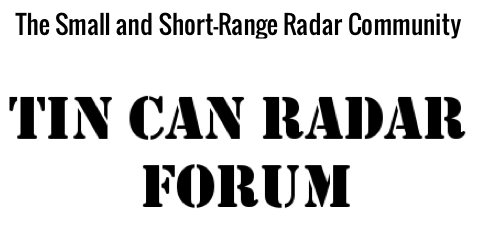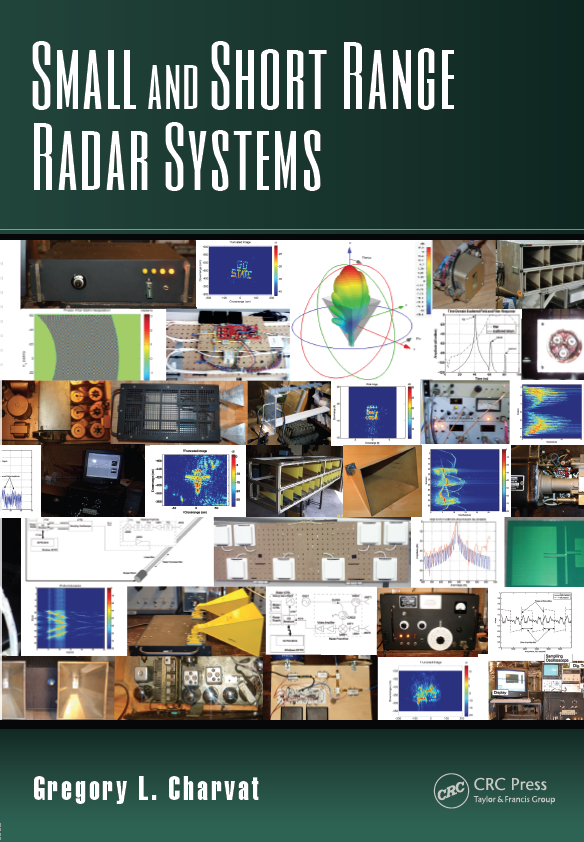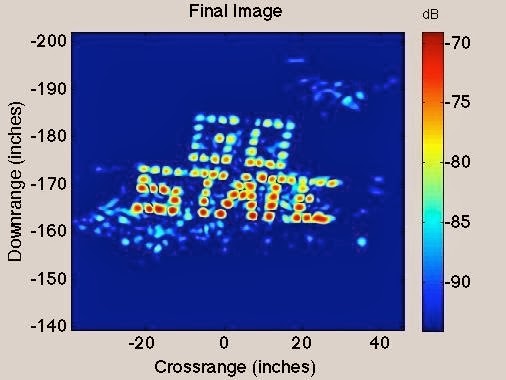

Recently MIT Lincoln Laboratory sponsored a short radar course at MIT main campus during the January 2011 Independent Activities Period (IAP). The objective of this course was to generate student interest in applied electromagnetics, antennas, RF, analog, signal processing, and other engineering topics by building a capable short-range radar sensor and using it in a series of field tests. The underlying philosophy being that students have a vested interest in making their own radar work properly, causing them to dig deeper into these subjects on their own volition thereby providing a self-motivated learning experience. A series of lectures on the basics of radar, modular RF design, antennas, pulse compression and SAR imaging were presented. Teams of three students received a radar kit. Nine teams participated in the course.
The radar kit was an S-band coherent frequency modulated continuous wave (FMCW) radar centered at 2.4 GHz with less than 20 mW of transmit power developed by the authors. To reduce cost, the antennas (transmit and receive) were made from coffee cans in an open-ended circular waveguide configuration. To clearly show the RF and analog signal chain, all components were mounted on a block of wood similar to an early 1920’s radio set. The microwave signal chain was made from six Mini-Circuits coaxial components. The analog signal chain was implemented on a solderless breadboard for quick fabrication and easy modification. The video output and transmit synchronization pulses were fed into the right and left audio inputs of any laptop computer. To make the kit portable it runs on eight AA batteries. The total cost of each kit was $360.
The radar operates in three modes; doppler vs. time, range vs. time, and Synthetic Aperture Radar (SAR) imaging. To record data a student uses the .wav recorder program in the laptop. MATLAB scripts read the .wav data and form the appropriate plots.
Of the nine student groups all succeeded in building their radar, acquiring doppler vs. time and range vs. time plots. Seven of the nine groups succeeded in acquiring at least one SAR image. Some groups improved their radar sets by improving the signal processing algorithms, developing real-time radar graphics user interfaces (GUI’s), and by making a more robust chassis.
Most students were from MIT but a small contingent were from Northeastern University and one student built this radar as an independent study at Michigan State University. Great enthusiasm was generated after each field test. Students were engaged throughout the course and they continue to ask questions about how to improve the performance of their radar sets and how to make more sophisticated systems. Many students discussed scattering theory at length when trying to interpret their SAR imagery.
In summary, it is difficult to introduce the current generation of students to the field of applied electromagnetics, RF, analog, and signal processing because of the numerous challenging prerequisites needed before the rewards can be realized. By presenting these difficult topics at a high level while at the same time making a radar kit and performing field experiments, students became self motivated to explore these topics. In the long term, courses using this continuous engagement philosophy could help fill the gap as the current generation of radar engineers continues to retire.
More info about this course can be found:
MIT Lincoln Laboratory: MIT Lincoln Laboratory researchers introduce students to radar engineering
A Modern Approach to Radar | CSAIL
Links to student results and blog entries here.








Enjoyed your presentation this afternoon. Thank you for letting your blog readers know about it.
ReplyDelete